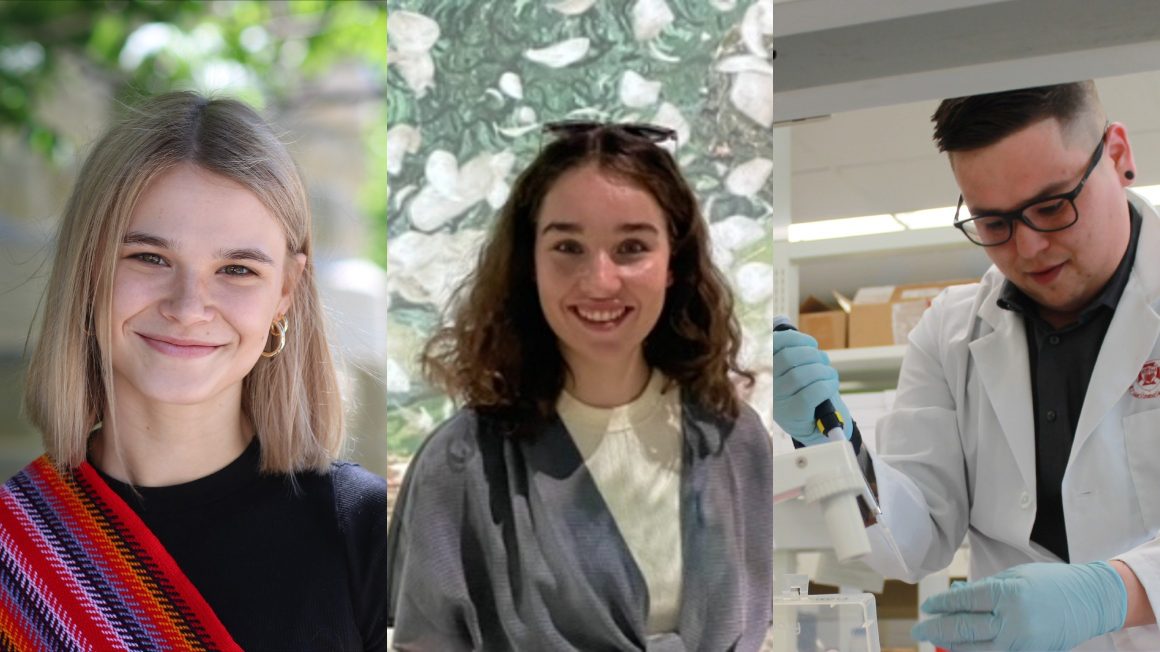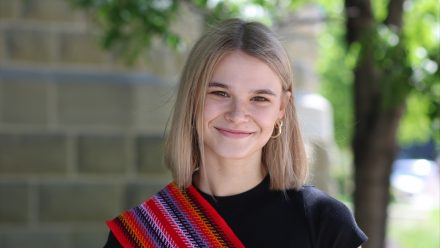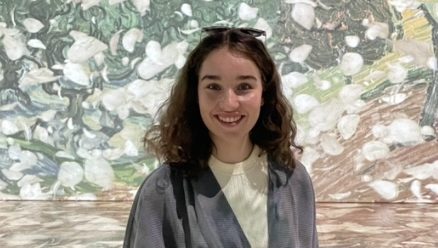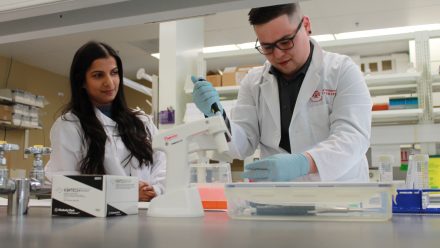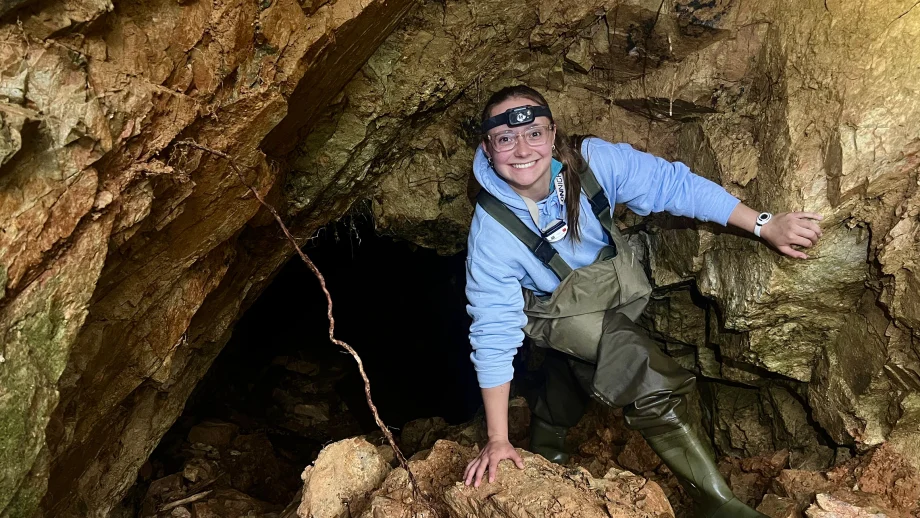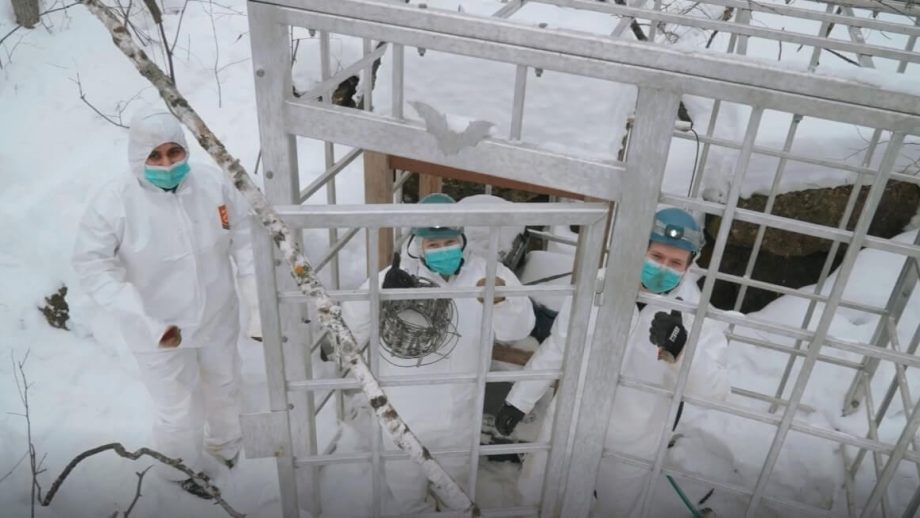Undergraduate student research continues to grow at The University of Winnipeg.
I am truly grateful to have had the opportunity to work with such a kind and knowledgeable professor, and for the support I received from NSERC.
Ava Stokke
On Friday, August 18, students who received Natural Science and Engineering Research Council (NSERC) Undergraduate Student Research Awards (USRA) in 2021 and 2022 were celebrated during a special hybrid event.
The USRA intend to stimulate student interest in research in the natural sciences and engineering, as well as encourage them to undertake graduate studies and consider a research career in the fields.
In total, 28 UWinnipeg students received USRA in 2022, including 14 Indigenous students, which is the most in the award’s history at UWinnipeg.
“It is always a true personal highlight to learn about the tremendous contributions UWinnipeg students make to research,” said Dr. Jino Distasio, Vice-President of Research and Innovation. “Each year, I am humbled by the work undertaken by students and the faculty members that provide some much time to the process. The University of Winnipeg remains an example of the power of undergraduate student research and this programs ensures students develop skills that will help the progress in future studies and work.”
Over the course of the afternoon, students discussed the research they conducted while under the supervision of a UWinnipeg faculty member.
Gracie Grift – Biology
Gracie Grift, who is President of the UWinnipeg Chapter of the Canadian Indigenous Science and Engineering Society, presented an update on her project: Examining the Effect of Sex on the Work of Breathing During Exercise in Humans.
Her study focuses on investigating how sex-differences in respiratory system morphology affect the work of breathing during exercise in healthy adults.
Because the understanding of the physiological response to exercise in humans is largely based on research performed predominantly in males rather than females, Grift hopes to improve our understanding of the influence of sex on the response to exercise as it relates to the respiratory system.
“Our preliminary results support our experimental hypotheses. Sex-differences in the work of breathing during exercise are evident, although accounting for the effect lung size reduces the magnitude of the difference in work of breathing between males and females,” she explained. “By the end of the first semester, we hope to have collected around n=40 participants and begin working on writing a report and publishing our findings. My goal is to have a finished research report by next summer.”
She says working under the supervision of Dr. Yannick Molgat-Seon has been a great experience, and he has been an incredible leader and mentor.
“In the lab, myself and the other research assistants were all given the freedom to be the project lead on our own individual projects,” Grift said. “I am extremely thankful for his trust and leadership as I continue to learn and develop my skills as a researcher.”
Some major skills Grift gained this summer include proficiency in research proposals, a deeper understanding of the complexity of research projects, and improved presentation skills.
Ava Stokke – Mathematics and English
Ava Stokke, who is going into her third year of studies at UWinnipeg, presented Quadrature Rules Involving Derivatives. Her research is taking place under the supervision of Dr. Matthew Wiersma, Assistant Professor of Mathematics.
“The research I worked on this summer focused on numerical integration and the methods we can use to approximate complicated areas when there aren’t known formulas for the area of the shape bounded by a curve,” Stokke explained.
For example, the area could be approximated using a sequence of trapezoids, a shape there is an area formula for. There are known formulas for calculating the errors of these approximations, but these formulas only apply to areas of regions bounded by certain curves.
“The project I worked on involved developing new methods to obtain error formulas that apply to some curves that were not covered using previously known methods,” Stokke said. “So far, we have been able to find a nice formula for the optimal approximation, and we are still working on finding an error bound for this approximation.”
Being able to work with Dr. Wiersma was an amazing learning experience, as she was able to take what she learned in the classroom and apply it to real-world research.
Stokke added that he taught her mathematical techniques and topics that helped her understand the problem, how to conduct math research, how to determine the best methods to use, and how to present what she had been working on.
“I am truly grateful to have had the opportunity to work with such a kind and knowledgeable professor, and for the support I received from NSERC.”
Corey Sanderson – Biology, Psychology, and Neuroscience
Student biologist Corey Sanderson’s research is taking place under the supervisor of Dr. Sanoji Wijenayake.
His research, Impact of Atmospheric Phosphorous Deposition in Streams on the Native Microbiota, took place during the 2022 Indigenous Summer Scholars Program (ISSP) and also with NSERC USRA funding.
Sanderson first met Dr. Wijenayake when he took her Developmental Biology course.
After learning about her exome research and baby development, he was interested in how this research could be applied to help Indigenous community health, which led to him applying for the NSERC USRA with Drs. Wijenayake and Nora Casson.
“The one-on-one lab experience was the best part,” Sanderson explained. “I am a hands-on learner and had the opportunity to directly observe Dr. Wijenayake pilot the DNA extraction from the soil firsthand. She then supervised me with comments and will do so until I have built up enough skills and confidence to do the DNA extraction on my own without supervision.”
Under Dr. Casson, he had the great opportunity of partaking in a project investigating the atmospheric deposition of phosphorous in agricultural catchments over the last year.
When he’s not in the lab taking part in world-class research, Sanderson has another hobby. He calls himself the “sewing scientist” because of his passion for making Starblankets.
“I had the amazing opportunity to share my art with my supervisors (Drs. Wijenayake and Casson) by gifting them with handmade Starblankets at the opening ceremony of the ISSP,” he said. “This made me feel amazing sharing my art with two people who I look up to.”
To learn more about the Undergraduate Student Research Awards, visit NSERC’s website.

